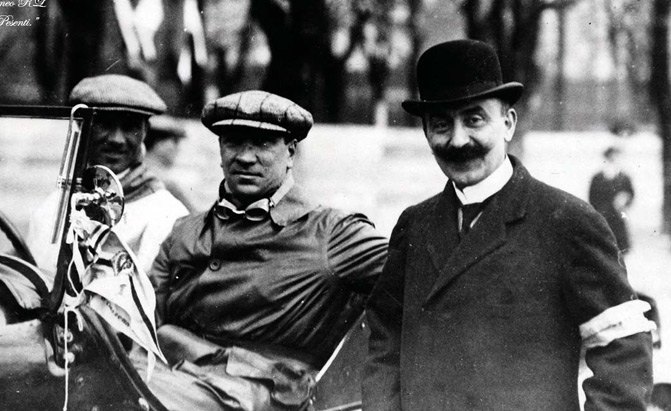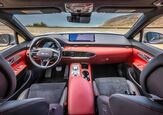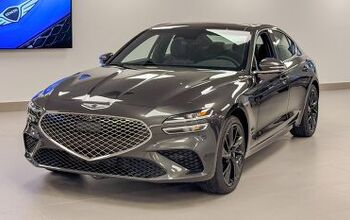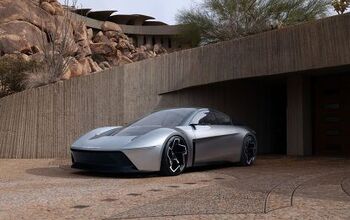12 Alfa Romeo Facts You Should Know: The Short List

Alfa Romeo is a most alluring brand.
It brings to mind power, beauty, pedigree and a level of exoticism not found in most automobiles. But aside from how it might make you feel, how much do you actually know about this storied Italian company? Well, here are 12 interesting facts about Alfa Romeo, things you may not have known.
12. It has French Roots
It all started around 1906 in a suburb of Milan where French automaker Darracq erected an automobile factory. But when the economy soured a few years later the business’s managing director, an Italian aristocrat, acquired this facility. Then, on June 24, 1910, he rechristened the company and began building cars under a new name, one you can probably guess.
11. 24HP, The First Alfa
Obviously, it was Alfa, though the Romeo half came a few years later.
Check Out More Episodes of The Short List!
The very first Alfa-branded car was called the 24HP even though its 4.1-liter engine delivered 25 horses. This apparent discrepancy has to do with its taxable power rating. Well-engineered and quick, it delivered a terrifying top speed of 62 miles an hour… on wooden-spoke wheels… with just two rear drum brakes… Yeah, no thanks.
10. Alfa is an Acronym
As for the company, Alfa is not a particular place, thing or even somebody’s name, it’s an acronym, standing for Anonima Lombarda Fabbrica Automobili. Basically, that means the Lombard Automobile Factory Company.
9. Romeo Saves the Day in 1915
So, where did Romeo come from? Well, in 1915 World War I, The Great War, the war to end all wars was raging on multiple fronts, locking European powers in a bloody, bankrupting fight to the death. Helping fuel this conflagration, automakers supplied guns, hardware and munitions to their respective nations, however, Alfa lacked the funds to switch over to wartime production, which is where Nicola Romeo enters the story. A prosperous engineer and entrepreneur from Naples, he acquired the firm, building aircraft engines and portable compressors, making a mint in the process. Naturally, as new owner, he had to add his name to the concern, and Alfa Romeo as we know it was born.
SEE ALSO: Alfa Romeo Giulia Quadrifoglio Review – VIDEO
8. Hometown Homage
Next up, let’s focus on the company’s unique logo, which is comprised of several elements. The red-cross-and-white-field motif on the left side is borrowed from the Milanese coat of arms, while the snake eating a man on the right comes from the Visconti family crest, the city’s former rulers. Now, the latest iteration of Alfa Romeo’s logo, which has changed constantly over the years, came out on June 24, 2015 to help celebrate their 105th birthday.
7. Win After Win After Win
Now, let’s focus on the company’s motorsports success for a moment. Since traditionally Alfa Romeo cars have been lighter, better handling and often more durable than what rivals fielded, they were able to win scores of races from the Mille Miglia to Le Mans, Formula 1 to the Vanderbilt Cup and many, Many, MANY more. Famously, they took first place in the challenging Targa Florio of 1923.
6. The Quadrifoglio Story
And there’s an interesting story about that particular competition. Driver Ugo Sivocci won that year after a series of second-place finishes, apparently breaking his unfortunate losing streak by painting a white square and four-leaf clover on the side his RL Targa Florio racer.
And it worked, albeit only briefly because Sivocci was, unfortunately killed soon after at Monza while testing a new high-performance car, one that eerily was NOT adorned with his lucky Quadrifoglio insignia.
After this tragic event, all Alfa Romeo racing machines featured this iconic clover-leaf motif, though instead of a square they were put inside a tringle, signifying the loss of Sivocci.
But that’s not the end; there’s one more interesting element to the Quadrifoglio story. You see, Sivocci drove car 17, a number that has never since been used on a factory-backed Alfa Romeo racecar. #FunFact!
5. The Ferrari Connection
The whole story is fairly complicated, but did you know Enzo Ferrari himself ran the Alfa Romeo racing team for about 10 years? His world-famous prancing-pony logo even appeared on their cars. IT’S TRUE!
4. Production Push
In the 1950s, after a second global war that left Europe in ruins had finally ended, the company began to focus on introducing more production vehicles, models like the 1900 and Giulietta, the latter of which really put this company on the map. Well-designed from day one, the car’s aluminum alloy Twin Cam four-cylinder engine was produced in one form or another for about 40 years.
SEE ALSO: 2018 Alfa Romeo Stelvio Review
3. Government Motors
Point No. 3, Alfa Romeo was effectively acquired by the Italian government in 1933. Believe it or not, the company remained under national control until 1986 when Fiat bought it.
2. NO CARS FOR YOU!
Another year of note in the history of Alfa Romeo is 1995, the year they stopped exporting cars to the United States, except for about 100 examples of the beautiful 8C Competizione around 2007. Of course, they returned to ‘Murica once more in 2015 starting with the sultry 4C sports car. Today, their lineup on this side of the Atlantic also includes the Giulia sedan and Stelvio crossover.
1. More Powerful Than Ever
Finally, it’s important to touch on the company’s modern lineup. It’s hard to believe, but Quadrifoglio versions of the Giulia sedan and Stelvio crossover are the most powerful Alfa Romeos ever. The Ferrari-sourced 505-horse V6 engine found in each delivers more ponies than ANYTHING else they’ve built, and that includes Formula 1-winning racecars.
Discuss this story on our Alfa Romeo Forum

Born and raised in metro Detroit, Craig was steeped in mechanics from childhood. He feels as much at home with a wrench or welding gun in his hand as he does behind the wheel or in front of a camera. Putting his Bachelor's Degree in Journalism to good use, he's always pumping out videos, reviews, and features for AutoGuide.com. When the workday is over, he can be found out driving his fully restored 1936 Ford V8 sedan. Craig has covered the automotive industry full time for more than 10 years and is a member of the Automotive Press Association (APA) and Midwest Automotive Media Association (MAMA).
More by Craig Cole








































Comments
Join the conversation
Interesting reading, thanks. Alfa has come a long way since I bought my GTV in 1969, I still have it and enjoy it.